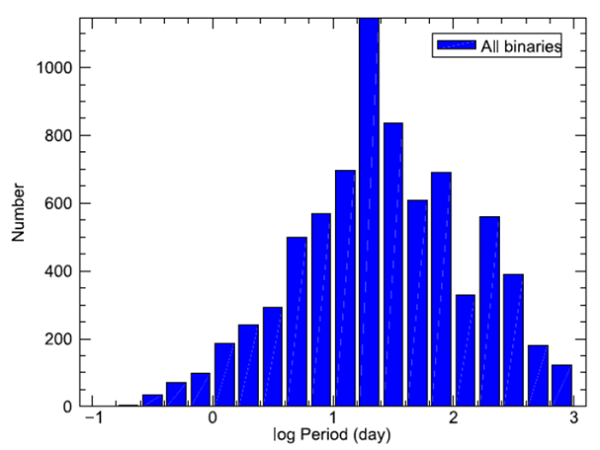Binary stars, the primary form of stars, are the fundamental bricks for astrophysics by providing model-free stellar parameters and contributing countless interesting astronomical phenomena.
Although astronomers had found more than 100,000 binaries, a few of them have plentiful parameters and come from very inconsistent sources. As a result, the overall characteristics of the binary stars remain unclear.
Recently the largest binary stars catalog with plentiful parameters from a uniform source was published in The Astrophysical Journal Supplement Series by astronomers from Yunnan Observatories of Chinese Academy of Sciences. This catalog contains 12 parameters for 1320 binary stars, and all of them are discovered based on Kepler database and followed by LAMOST (Large Sky Area Multi-Object Fiber Spectroscopy Telescope) spectral observation.
"Because of the plentiful parameters and the case of single source, the correction on selection bias is feasible,” said Dr. ZHANG Jia, the leading author of the publication. “This is the key of the door towards the real distribution of binary stars.”
The period distribution of binary stars is very useful for simulation on massive binaries stars, which is the basic initial condition for computing the statistical features on a large group of binaries.
The authors obtained a new period distribution which is quite different from previous studies. This at least suggests that our understanding on binaries is far from complete.
Along with many known phenomena on binary stars that were reproduced, some new interesting ones were discovered. The orbital eccentricity distribution for detached binaries, for instance, shows unexpected results. The distribution rises up suddenly when eccentricity is very close to unity. “This is an incredible phenomenon which deserves further studies,” said Dr. ZHANG.

The period distribution of binary stars (Image by ZHANG Jia)
Contact:
ZHANG Jia, YNAO, CAS
zhangjia@ynao.ac.cn